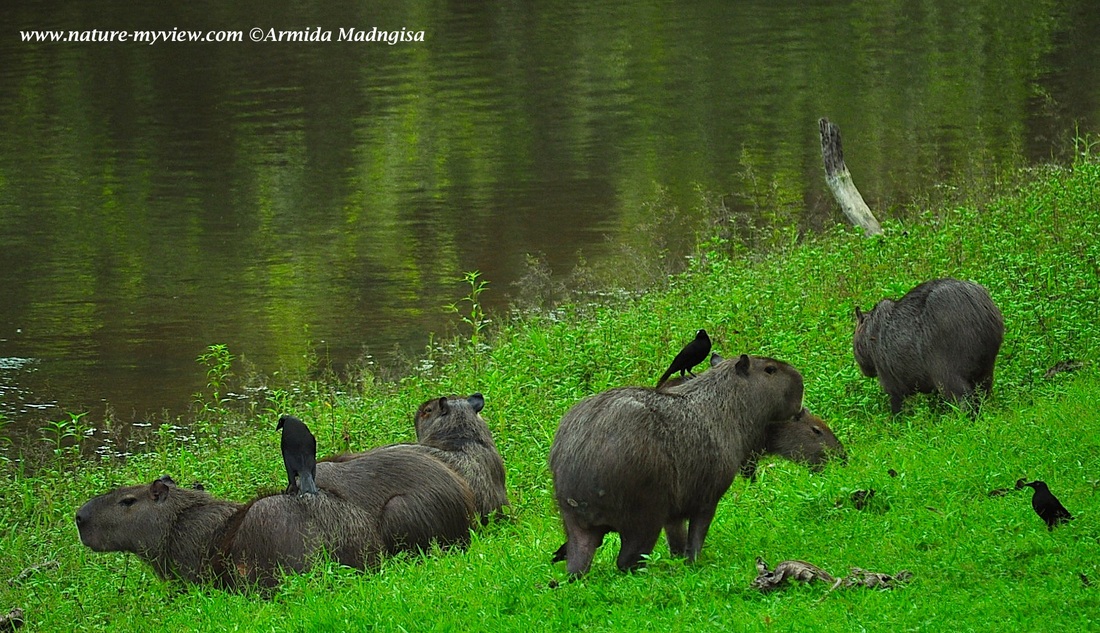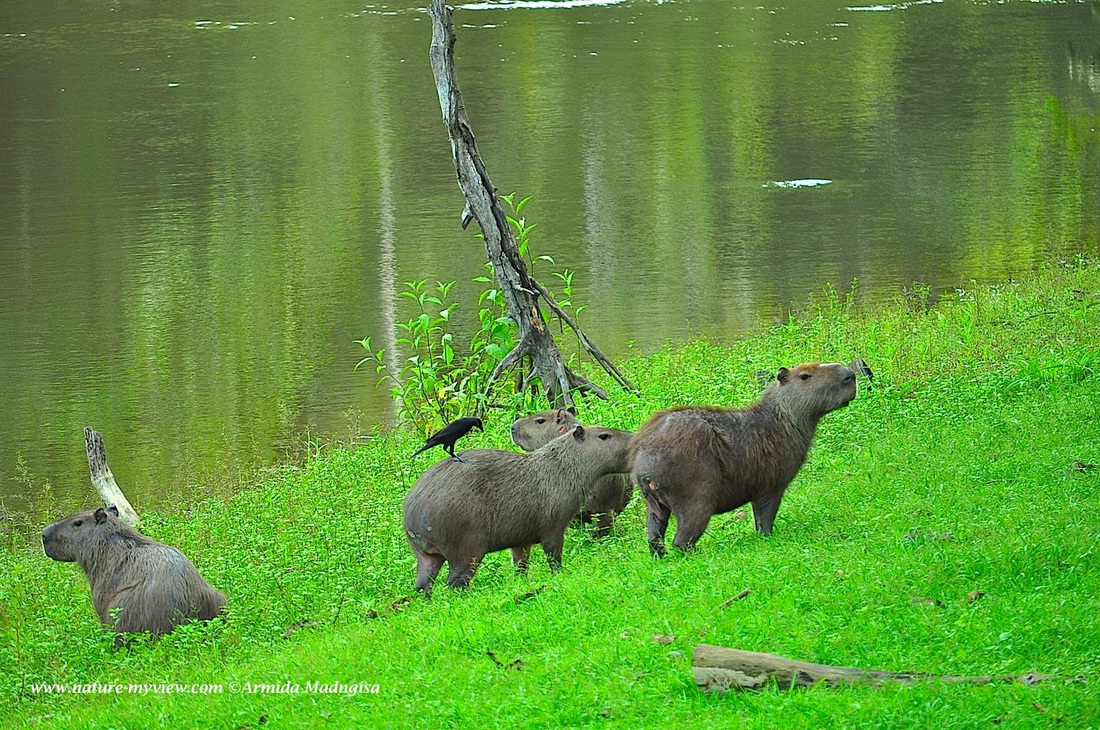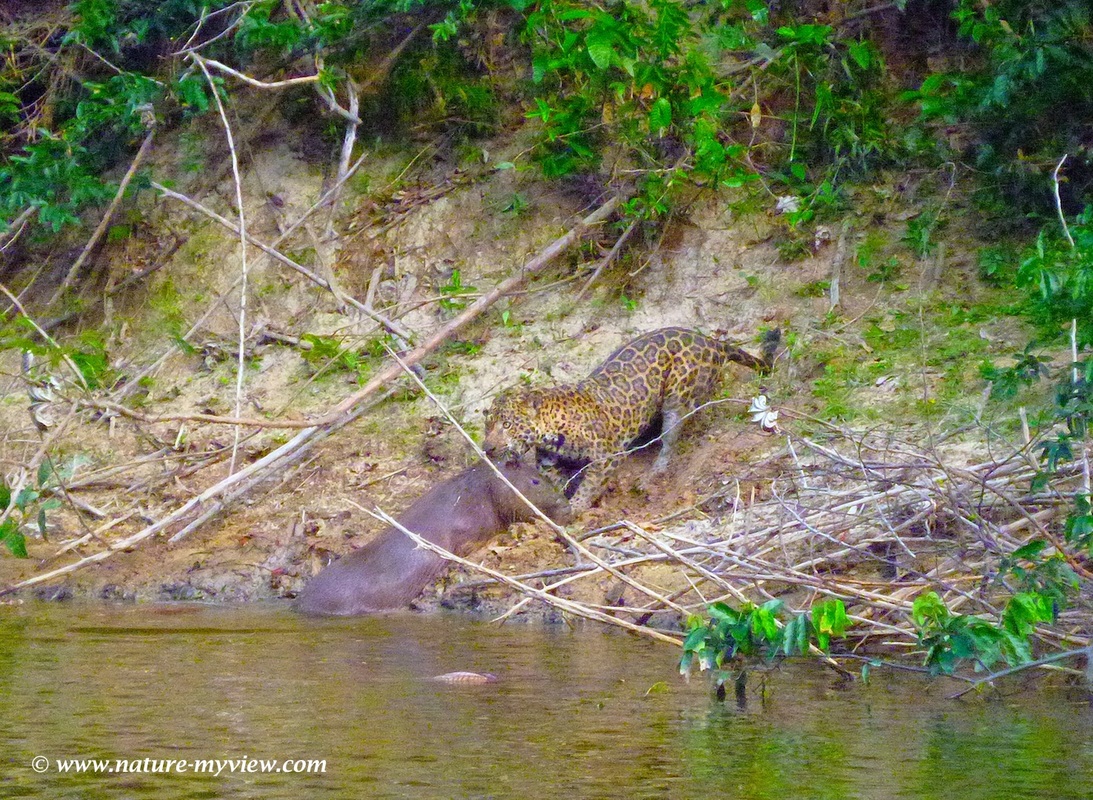|
Capybaras are the largest rodents in the world. Semi-aquatic mammals living in large groups near the water. They live on grass, water plants and twigs. The river is their escape route for predators, 'cause when alarmed they jump in the water, swim away as fast as they can and most of the time they dive and swim further away under water.
The first time that I've seen capybaras were in the Paramaribo Zoo. Those were occasional visits during childhood. Back then I knew them as Kapoea, the Surinamese name for Capybara. Years past by before I've seen another capybara. That was when I came to work here in Kabalebo. A remote place in the interior of Suriname. It was a strange feeling to see them in their natural habitat. No fences, no concrete ground or man - made habitat ..... no, it was simply in the jungle and they were living like free animals. Seeing them in the wild also brought a bitter/sweet feeling. Of course it is an indescribable experience to see capybaras up close and personal, but knowing that they are also vulnerable for predators like the jaguar or the red-eye piranha is a bitter/sweet experience for me. Also, as they are group animals, having a sick or wounded member amongst them, is vulnerable for the groups' safety. This will slow the group down. I've witnessed on 2 occasions that the group abandoned a sick or wounded member. In both cases none of the abandoned members survived the ordeal. As Capybaras are active during both day and night time, it is unpredictable to say when and where to see them. Most of the time they surprise me. They appear when you least expect them, but I always seem to forgive them for that. Comments are closed.
|
Archives
June 2024
Categories
All
|






 RSS Feed
RSS Feed